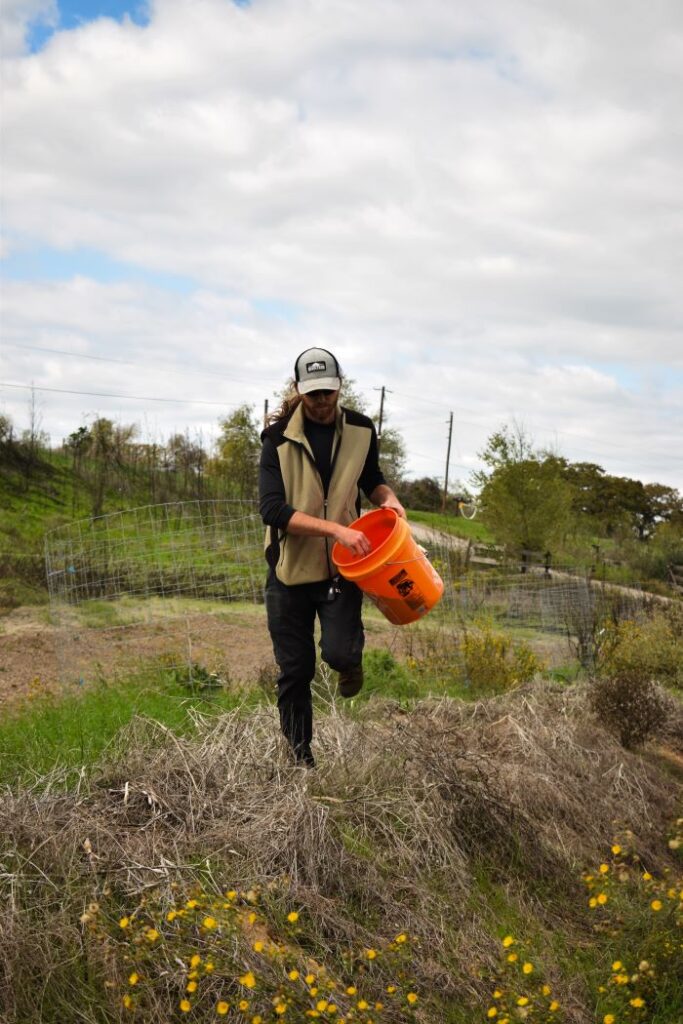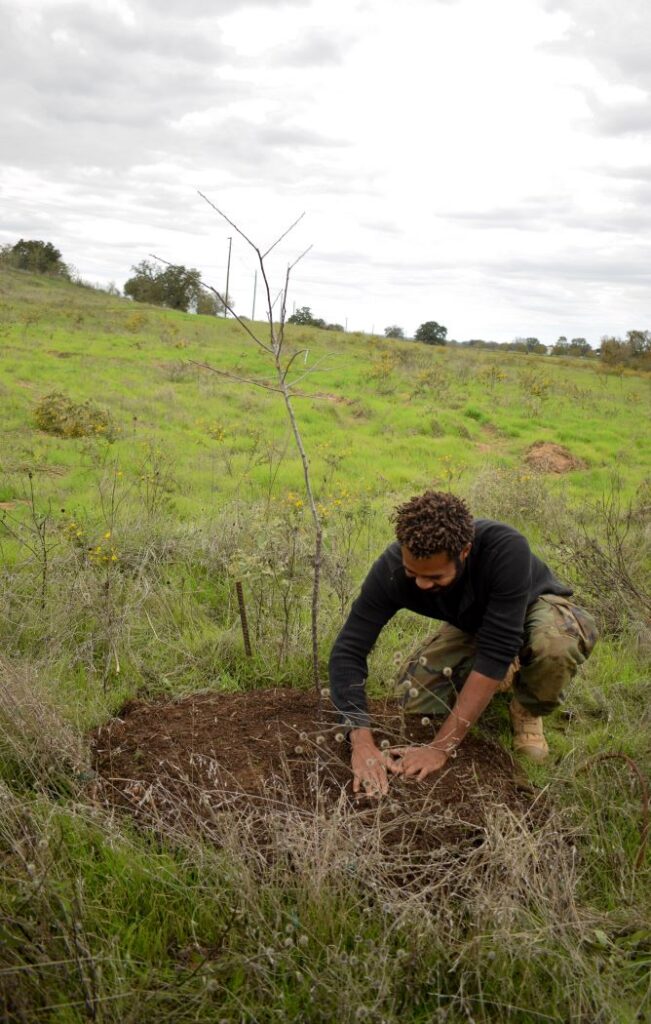On February 1st there is a transition from the first half of Winter to the second. In Central Texas the second half of Winter can be a somewhat unpredictable time in terms of the weather. February will probably be the time of the last and most severe freeze of the Winter. Warm afternoons might lead some Texas permaculture gardeners and food forest stewards to get ahead of themselves. The last frost may be some time off and over-eagerness for the start of Spring has led to too many sad stunted tomato plants to count. Don’t get ahead of yourself. February is the time to prepare for planting, but not yet the time to put Spring vegetables.
Seeds, Seeds and seeding!
If you haven’t done it yet, February can be a great time to plant from seed. Cover crops and many kinds of flowers can be directly seeded. If you have the patience and drive for it, you can start seeds in trays indoors. This will allow you to really hit the ground running when we pass the last frost.

Recommended research on this. Hit YouTube with the search phrases Indoor Seed Starting Set Up and Soil Blocks vs Plastic Pots. You can build this system up modularly over time. If you use it each season it will pay for itself. Then it will start saving you money since buying vegetable starts from a nursery will no longer be necessary. Your garden will be more successful if you’re growing healthier, fully organic plants. You will have more control over planting at the perfect timing window. Who doesn’t love seeing seeds sprout?!
Here’s one video we like on soil blocks from Blossom and Branch Farm: https://www.youtube.com/watch?v=2ZTIrkupaf8
Selective Clearing and Cutting Back
After freezes or frosts, many perennial plants in a permaculture garden will be dead above ground. Some will have taken frost damage. Don’t worry! This is all part of the natural cycle! While some dead plant material hanging out around the landscape can be good for wildlife, in the second half of Winter we will want to start clearing that dead material. This helps new shoots on perennials get good access to light and room to emerge. Neatly collecting treefall, raking leaves and cutting back perennials will help you immensely when it comes time to plant and will help your garden look neat in the intervening time.
You can practice chop and dropping some of this material around the base of your trees
Compost Like Your Garden Depends On it… It Does!
While you are collecting biomass left around your permaculture garden, starting piles specifically designated for compost is a great move. Composting can be an involved affair with many steps. Compost enthusiast will often inoculate, hydrate and manually turn the compost piles. Composting can also be very simple. Just aggregating organic matter somewhere that it won’t be in your way and give it time. A simple ring made of 12- 16 feet of fencing material can be used to hold your compost in a smaller area. Given enough time it will break down into a nice soil amendment. Stacking the functions of composting and garden cleanup is efficient and pays off later on.
Remember that compost piles can help to “digest” carbon rich material like cardboard. You will need to strip all of the plastic off of it. Make sure to use non-glossy boxes. For best results, cut or rip it into smaller pieces. A good compost pile will have more carbon rich materials than food scraps AKA nitrogen rich materials.
One other ingredient needed for success is enough air in the pile. This is achieved by having enough carbon rich materials that create space in the pile for air pockets. This is also one reason why people turn the compost piles. Mixing the materials adds air. The piles heat up after being turned as the microbes respond to aeration. If your pile starts to smell really bad, it is probably anaerobic. That just means a lack of air. When anaerobic the compost breeds the kinds of bacteria that smell bad to us. Sensing a bad smell from the compost is our body’s way of letting us know these microbes are not good for us. A good compost smells rich and earthy but not putrid.
Now back to simplicity. Where most people go wrong is in adding too much nitrogen rich material to the pile. If you don’t add any at all, it will still compost, just more slowly and with more fungal microbes. This kind of fungal compost is actually desirable it just takes longer to make.
Add Woody Plants To Your Garden
February can be a great time to put in woody vines, shrubs and trees. At this time of year you can order bare root fruit trees which are affordable and easy to install. Since they don’t come in pots, they won’t have any of the root problems we sometimes see in potted trees. All woody plants will benefit from being planted while they are dormant. This gives more time to establish healthy roots before the heat of Summer. It also reduces transplant shock.

Pruning For Shape and Production
If you already have woody plants in your permaculture garden, February is a great time to prune them. Fruit trees need to be pruned so that they develop an open center. This helps light reach all of the branches. The shape you are pruning towards is like that of a wine cup. There needs to be a clear branching point at which the main trunk splits into 3-4 scaffold branches. These are your main structural branches off of which fruit bearing branches grow. It’s good to take this time to prune damaged and diseased tissue. Prune branches that rub each other or that grow in undesirable directions. Down towards the ground, in towards the middle of the tree or upwards through other branches.
You can add these pruned branches to your compost. With non-grafted trees, you could try your hand at propagating more trees by rooting the pruned branches AKA cuttings.
If you follow these tips, you will be more ready for the most exciting season of the year, SPRING, when it feels like there’s never enough time to get everything in the permaculture garden done. You’ll be prepared for Spring planting beginning in March. The whole Spring season will become much easier and more enjoyable due to your preparedness.
Remember, Gardening Feels Good And Counts As Self Care
Enjoy the warm February afternoons that promise Spring is around the corner as you steward your Texas permaculture gardens! Remember, getting outside, absorbing vitamin D and getting your hands dirty can help get you through the rest of Winter in good health. Not to mention nibbling on fresh wild and cultivated foods that deliver nutritional value you can’t get anywhere else. Stay mindful with how you move your body through all of these tasks and gardening can be like a mobility workout! If your back hurts after your done, your probably not using your legs enough. Being able to squat all the way down to the ground is a key marker for health as we age.
Stay With Us
This is a monthly installment and if your catching up you can visit our blog for Texas Permaculture Gardening and Food Forestry Tips For January to make sure all your bases are covered:
